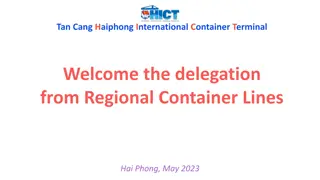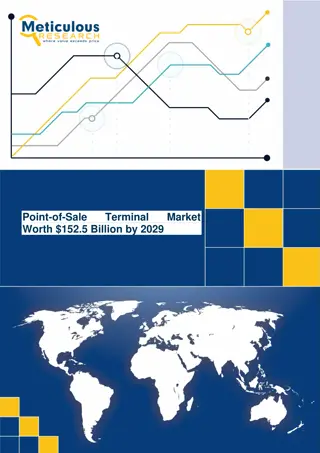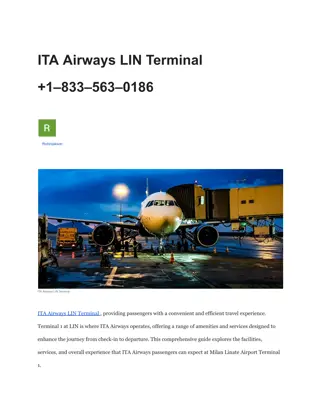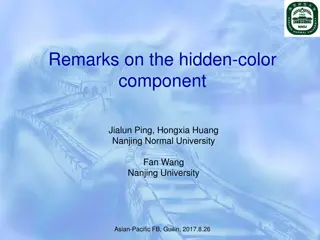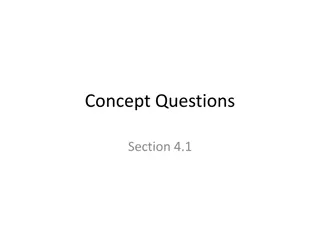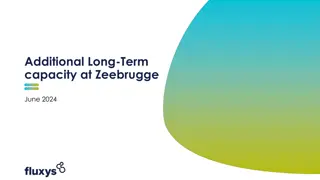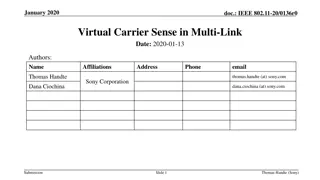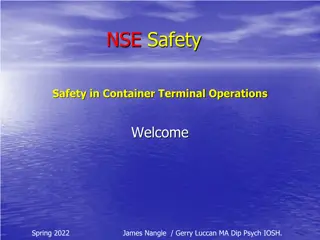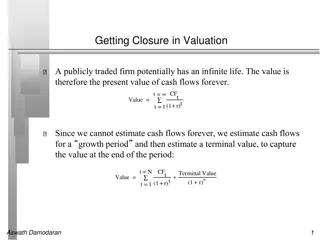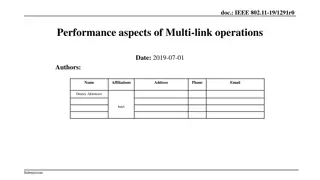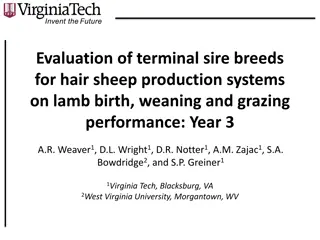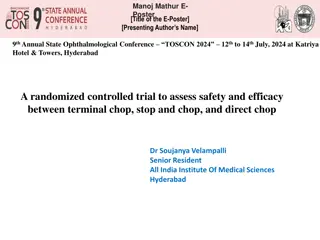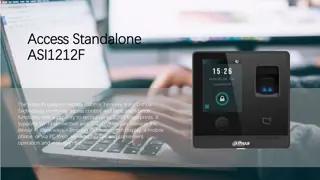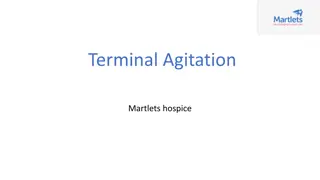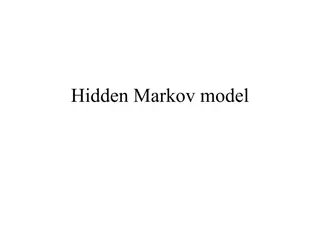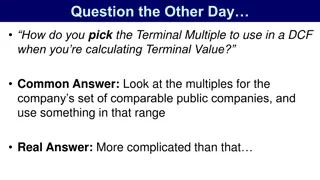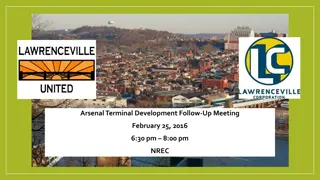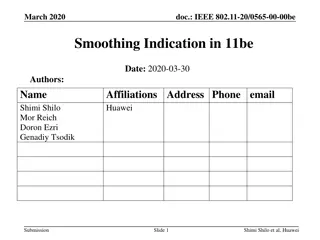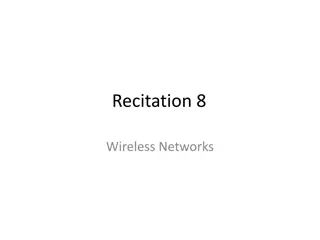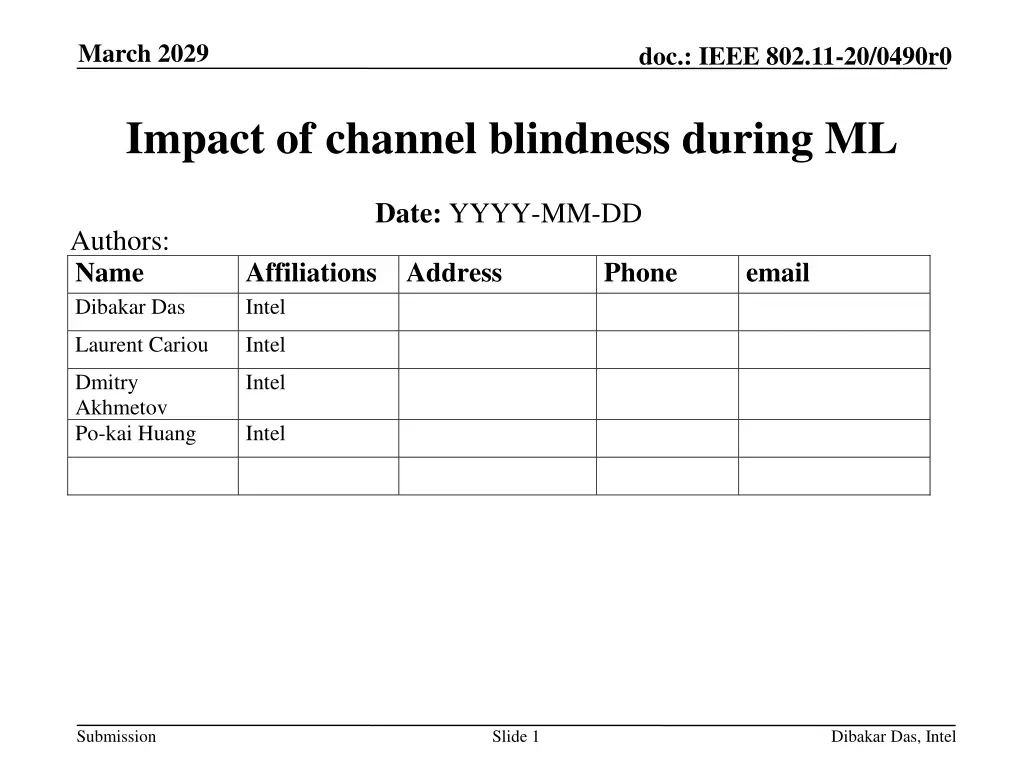
Analyzing Impact of Channel Blindness in ML Operations
Explore the impact of hidden node problems arising from temporary channel blindness during machine learning operations on non-STR devices in IEEE 802.11 networks. Understand the challenges, simulation scenarios, and results to recommend solutions for enhancing network performance and throughput.
Download Presentation

Please find below an Image/Link to download the presentation.
The content on the website is provided AS IS for your information and personal use only. It may not be sold, licensed, or shared on other websites without obtaining consent from the author. If you encounter any issues during the download, it is possible that the publisher has removed the file from their server.
You are allowed to download the files provided on this website for personal or commercial use, subject to the condition that they are used lawfully. All files are the property of their respective owners.
The content on the website is provided AS IS for your information and personal use only. It may not be sold, licensed, or shared on other websites without obtaining consent from the author.
E N D
Presentation Transcript
March 2029 doc.: IEEE 802.11-20/0490r0 Impact of channel blindness during ML Date: YYYY-MM-DD Authors: Name Dibakar Das Affiliations Address Intel Phone email Laurent Cariou Intel Dmitry Akhmetov Po-kai Huang Intel Intel Submission Slide 1 Dibakar Das, Intel
March 2029 doc.: IEEE 802.11-20/0490r0 Abstract We analyse the effect of hidden node problem caused due to temporary channel blindness during ML operation at a non-STR device. Submission Slide 2 Dibakar Das, Intel
March 2029 doc.: IEEE 802.11-20/0490r0 Introduction When a non-STR device is transmitting on a link it is unable to do any Carrier sense on the other link. As a result it may miss preambles, RTS-CTS etc. transmitted on the other link. After the transmission is over, the STA may falsely detect the medium to be idle and transmit => multi-channel hidden node problem. This presentation we analyze the impact of such hidden node and recommend some solution. RTS (TA: STA1, RA: AP1) STA1) BA (RA: STA1) DATA (TA: STA1, RA: AP1) CTS (RA: AP 1 STA 1 Link 1 Non-AP MLD 1 RTS (TA: STA1) STA 2 AP 2 Link 2 time RTS (TA: STA3) CTS (RA: STA3) DATA (TA: STA3, RA: AP2) Link 3 AP 2 Non-AP MLD 2 STA 3 : Not blind : blind Collision at AP 2 AP MLD Submission Slide 3 Dibakar Das, Intel
March 2029 doc.: IEEE 802.11-20/0490r0 Simulation scenario Two configs to study impact on UL and DL configs for ML with 2 links. Config 1: Only full buffer UDP UL traffic where Rx power at EHT STA MLD from the hidden non-AP node is between ED and CS thresholds. Config 2: Full buffer UDP UL traffic from EHT STA and full buffer DL traffic from AP to STA. 80 MHz BW, 2x2 config at EHT STA, 20dBm tx power at EHT STA. Modes: 1. STR EHT STA MLD. Non-STR EHT STA MLD without OTA info from AP. Non-STR EHT STA MLD with perfect knowledge of AP MLD status. RSSI: -62.6 dBm Legacy STA RSSI: -69.8 dBm RSSI: -63 dBm RSSI: -46 dBm AP RSSI: -25 dBm AP EHT STA EHT STA Legacy STA RSSI: -51.2 dBm Config 2 Config 1 Submission Slide 4 Dibakar Das, Intel
March 2029 doc.: IEEE 802.11-20/0490r0 Config 1 results Observations: If we consider the baseline to be the case where EHT STA is STR, the legacy STA s performance gets better when the EHT STA is non-STR. Having additional info does not improve legacy throughput as the effect of reduced collision during hidden nodes is offset by lower chances of channel access. Having additional info however does improve EHT STA throughput a bit as it reduces the number of events when it is self-blocking itself from transmitting on link 2 by attempting to transmit RTS to an already occupied AP on link 1. Submission Slide 5 Dibakar Das, Intel
March 2029 doc.: IEEE 802.11-20/0490r0 Config 2 results Observations: If we consider the baseline to be the case where EHT STA is STR, the legacy STA s performance gets better when the EHT STA is non-STR. Having additional info does not improve legacy throughput significantly as the effect of reduced collision during hidden nodes is offset by lower chances of channel access. Having additional info however does improve EHT STA throughput a bit as it reduces the number of events when it is self-blocking itself from transmitting on link 2 by attempting to transmit RTS to an already occupied AP on link 1. Submission Slide 6 Dibakar Das, Intel
March 2029 doc.: IEEE 802.11-20/0490r0 Conclusion and proposal Doing nothing to solve the multichannel hidden terminal problem does not actually hurt the hidden nodes. Doing something to prevent an EHT STA MLD from self-blocking itself (due to failed RTS transmissions) can improve EHT STA MLD performance. Option 1: Following a transmission on a link, non-STR EHT STA MLD refrains from transmitting any packet on the other link similar to the NAVsyncdelay timer behavior as it is similar to STA coming out of Doze. The timer duration can be pre-defined in spec or assigned by AP. If while the timer is running it receives a frame that sets is NAV, it cancels the timer. In order to preserve latency gains due to ML operation, the non-STR STA may be allowed to transmit upto one RTS frame to the AP while the timer is running. If a response CTS is received the timer is cancelled. Option 2: AP transmits cross-link information in a DL frame (e.g., BA) signaling whether it is transmitting or receiving packets on the other link and/or its NAV duration on the other link. Submission Slide 7 Dibakar Das, Intel
March 2029 doc.: IEEE 802.11-20/0490r0 Comparison of the two options Option 1 does not require fast cross-link information sharing among the APs in the same MLD and is mostly similar to the NAVsyncdelay operaton as defined in current spec => low complexity => prefer this to be included in R1 if we agree that it is a problem to be solved. Need to account for latency in channel access, AP controlled parameter. Option 2 can be considered in R2 as it requires tighter information sharing among the APs. Submission Slide 8 Dibakar Das, Intel
March 2029 doc.: IEEE 802.11-20/0490r0 Summary Channel blindness due to Tx-Rx constraints does not significantly affect legacy STA performance. Prefer a low complexity solution for R1 if we indeed decide to solve this problem. Submission Slide 9 Dibakar Das, Intel


